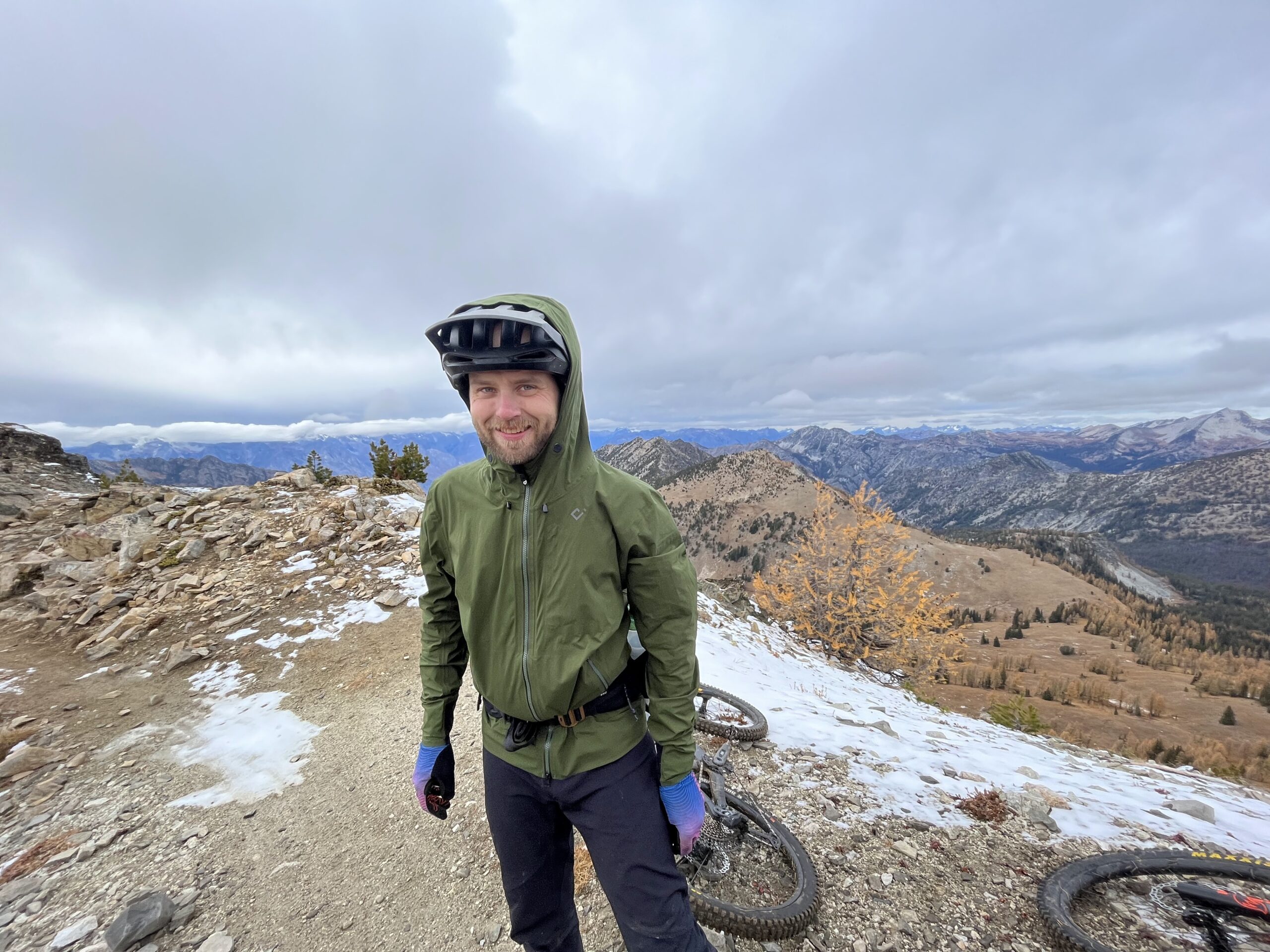
Intro
Most of our reviews are pretty long — and take a long time to produce — because we want to provide enough info for you to actually determine whether the gear we tested will work well for you.
But we get asked to check out an increasingly wide range of products, and sometimes, we just want to tell you about something we’ve been using and loving lately.
So that’s where this monthly series — Stuff We Like — comes in, where we keep you current on a broad range of stuff we’re currently digging.
And if there’s something you love that you think we ought to check out, drop us a note in the comment section below.
Patagonia Microdini fleece hoody, Tropic Comfort Natural UPF Hoody, & 32L Black Hole Backpack
- Microdini Fleece: $149
- Tropic Comfort Hoody: $99
- Black Hole Backpack: $169
Noah Eckhouse: Let’s just call this the “Fish Guts Test.” Here at Blister, we’re always creating innovative ways to test products, both in our science-first Blister Labs initiate as well as in situ. I figured it was time to make my contribution to the field of product testing. But let me rewind.
As I’ve mentioned in this series before, I had the chance to spend two full months boating in and around the Gulf of Alaska this summer, from Ladysmith BC to Glacier Bay National Park, to Juneau, AK, and back to Tofino. We saw a lot of different weather and use cases for outdoor clothing.
For this 2-month endeavor, I packed a few pieces from Patagonia: their Hooded Microdini fleece, Tropic Comfort UPF Hoody, and 32L Black Hole Backpack. Like all boating adventures, space was limited and I chose these three for what I thought were their all-round merits.
In conditions that ranged from 80°F / 27°C sun to icy, sideways rain coming off the face of a glacier, these pieces really impressed me. In warmer conditions, the Tropic Comfort sun shirt kept me shielded from the August rays and also worked well as a baselayer as we headed North and things turned colder. It stood up to washings, sweaty hikes, engine room heat, and still looked good for the few times we actually came upon a town and went out for a beer. It was surprisingly warm when needed, and the stretch in the fabric was a nice feature under a fleece and rain shell.
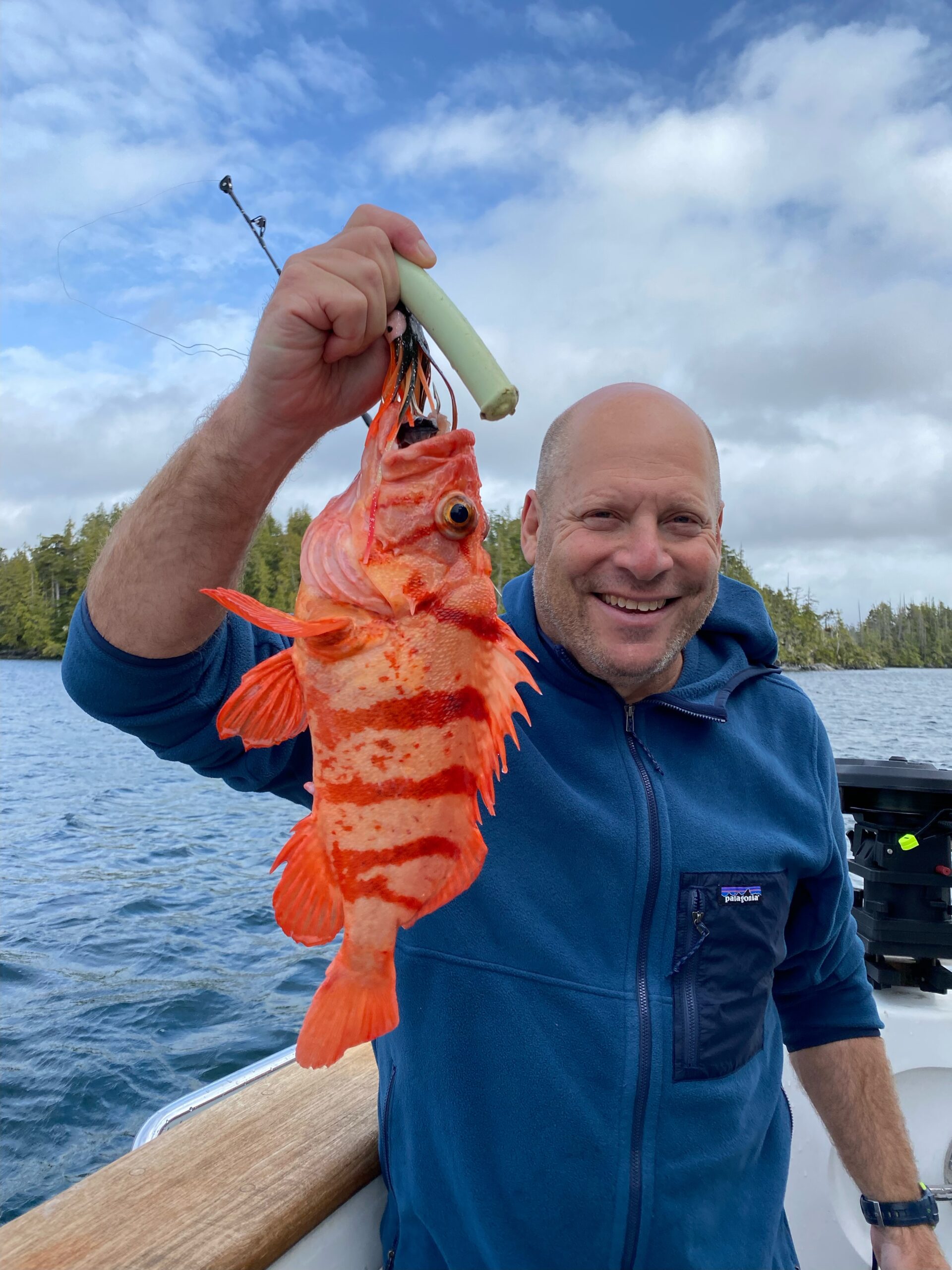
The Hooded Microdini fleece was the absolute standout. I think I wore that fleece virtually every day for two months — and I never got around to washing it. The Microdini would get soaking wet on the bow with unexpected rain while anchoring, but I’d pop on the hood and keep working. When I got back inside, I would hang it in the hot engine room and it would dry in 15 minutes. It never stunk, pilled, got matted down, or exhibited any signs of wear. It is an amazing midlayer piece and its chest pocket was constantly handy for phones, radios, tools, nuts / bolts, and energy bars. That is one workhorse jacket.
Finally, I packed the 32L Black Hole backpack because we’d be traveling in the dinghy where spray would be an issue. I needed a not-quite-drybag that would generally keep stuff dry in spray but also be good for hiking and protecting my laptop when needed. The 32L Black Hole looked rather unassuming when we first met, but true to its name, it carried far more gear than I expected and had pockets in all the right places. The shoulder straps really stood out when I loaded the pack with 20 pounds of gear and needed it to be stable on my back while getting on and off various boats and docks
Some nits? I wished the Tropic Comfort had a marsupial pocket in front (see earlier comments about holding things), the Microdini fleece’s hood could fly off my head in windy conditions (I’d love a modest drawstring), and I wish (on the version I tested) there were 2 parallel strips of webbing on the outside of the Black Hole backpack to stabilize loads better. Apparently, Patagonia thought the same, since the latest version features exactly that configuration on the face of the pack.
And the fish guts? I got salmon (and rockfish and halibut and lingcod) guts all over that Microdini more than once and quite literally just scaped it off and kept going. The fleece released all the goo easily and never retained odors. I was amazed. Please don’t tell my wife…
RMU Enduro Fanny 3L
MSRP: $89
David Golay: I’ve become a big fan of the RMU Enduro Fanny 3L pack, particularly for longer rides in cooler weather where I need to carry more food and layers than I can easily fit into a smaller pack. Its overall form factor is relatively conventional for a mountain biking hip pack. There’s a main zippered pocket with a water bottle holster on either side, and a smaller fleece-lined zippered pocket on the outer face of the pack with a key clip inside.
The main pocket has a stretchy organizer panel with three sewn-in pockets and a velcro retaining strap behind it for a small hydration bladder if you want to add one (though none is included with the pack). A pair of elastic loops at the top of the pack hold a pump out of the way.
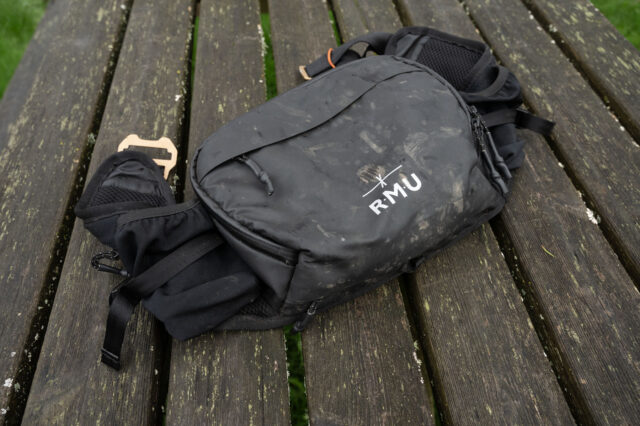
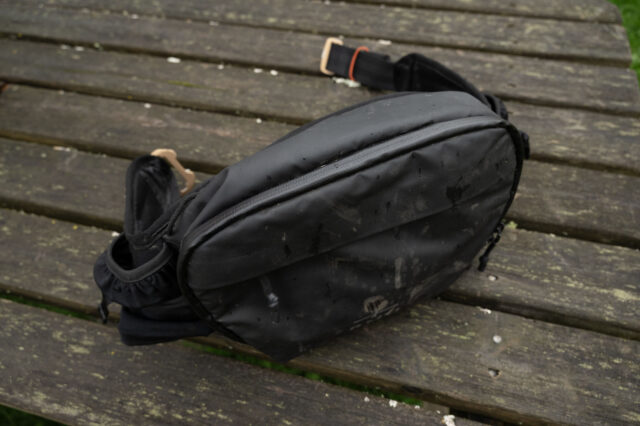
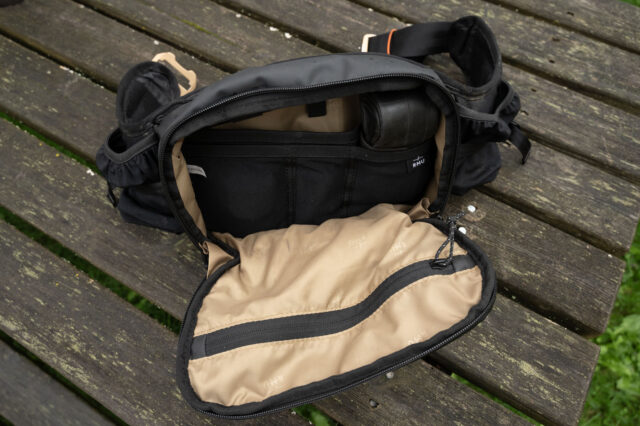
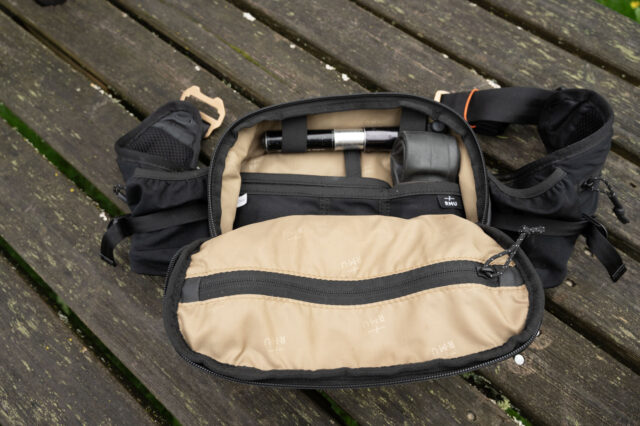
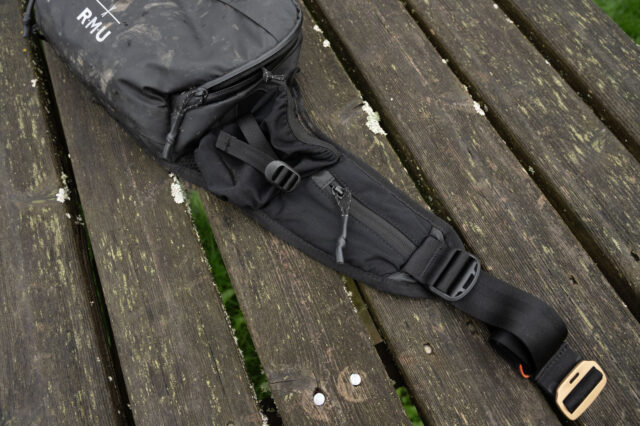
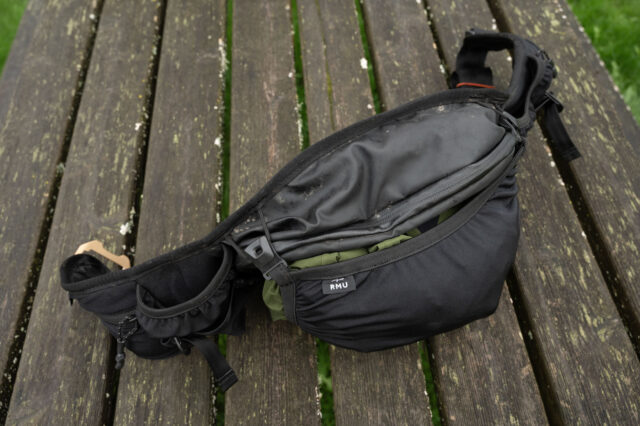
There’s also an additional zippered pocket on the inside of the front flap of the pack, and two more small ones built into the hip belt. The main body of the pack is made from waterproof PU-coated 420D recycled nylon, the main zipper is water-resistant, and the back panel is mesh covered and uses a ribbed foam panel to give the pack structure and leave some space for airflow.
My favorite feature of the Enduro Fanny 3L, though, is the external stowing flap, primarily meant for helmets, but that I’ve mostly used to carry a jacket. It is sewn into the body of the pack and tucks away into a small zippered pocket at its base; when deployed, it attaches to two loops of cord at the top of the pack and straps a jacket or other such item to the outer face of the pack. It’s especially quick and easy to use while still being quite secure, and particularly on fall rides where I’m often taking a jacket on and off depending if I’m climbing or descending, it’s really nice to be able to do so quickly and easily.
The Enduro Fanny 3L also carries notably well for what is a fairly large hip pack, even when heavily laden. The bottle holsters feature adjustable straps that keep them very secure, and despite its bulk, the pack sits fairly flat against my back and does an especially good job of not moving around. Between RMU’s slick aluminum buckle closure and the single adjustment point on the right hip, the Enduro Fanny’s strap has stayed tight — something that has been a problem on some other bigger hip packs for me, especially when more heavily loaded. A sewn-in elastic loop does a nice job of keeping the tail of the hip strap from coming loose and flapping around, too.
The Enduro Fanny 3L is a bit bigger than I’d ideally prefer for most of my everyday rides, but on longer ones where I’m looking to carry a bit of extra gear, it does so better than any other hip pack that I’ve tried to date. Its storage and organization features are thoughtful and functional, it carries weight well, and seems to be well-made and durable so far. I’ll keep another smaller pack or two around for quicker laps, but for longer days when I want to carry more gear than they can accommodate, I’ll be reaching for the RMU Enduro Fanny 3L.
Lé Bent Feathertop Ultralight Hooded Long Sleeve Tee
MSRP: $160
Kara Williard: It’s been a long time since I came across a shirt that felt as versatile as the Lé Bent Feathertop Ultralight Hooded Long Sleeve Tee. From casual wear to skiing, biking, and hiking, the Feathertop has become a favorite, with plenty of days logged in it over the past few months. It’s a really lightweight Merino layer that wicks moisture surprisingly well, is quite breathable, and offers UPF50+ sun protection. It’s soft against the skin, and feels pretty comfortable across a variety of temperatures.
I thought I would initially be wearing it mostly for skiing and other high-output activities, but I also can’t help but wear it casually because of how comfortable it is. I have worn it both as a cozy baselayer for skiing, and a protective layer for sun protection on long rides. At this point, it’s been through the washing machine countless times and has proven quite durable. It’s also very lightweight and packable, and that, in concert with its versatility and odor resistance, make it a layer that’s hard to not justify bringing on just about every trip or adventure. The hood is nice for sun protection and I especially appreciated it during really sunny and warm spring ski days.
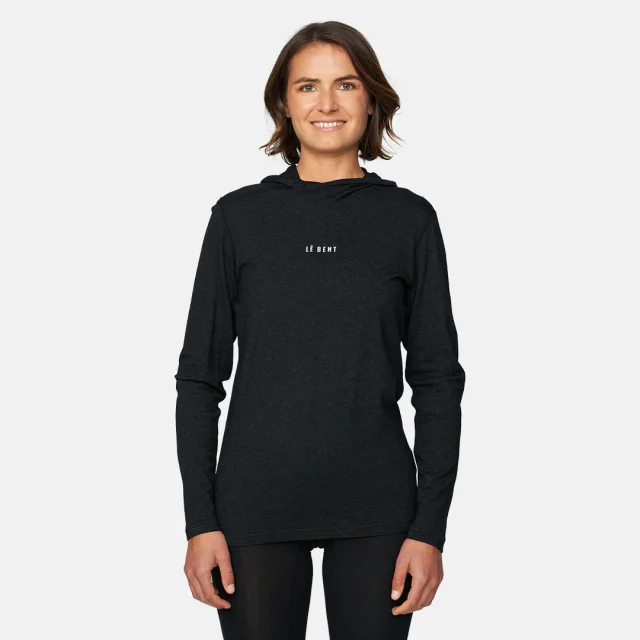
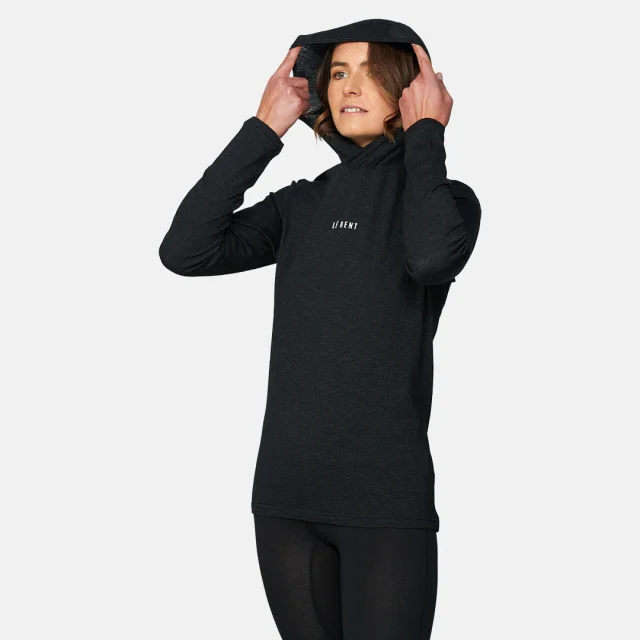
Lé Bent partnered with NuYarn to design this piece’s signature fiber blend that mixes Rayon from Bamboo (25%), Merino Wool (60%), and Nylon (15%). The end result is a top that feels a bit softer than a full Merino layer, is a bit more breathable, provides better moisture wicking than most full-wool layers, still maintains good odor resistance, and has a nice stretchy and elastic feel.
When it comes to care, I have been washing it on cold / delicate cycles and line drying; that seems to work quite well when it comes to the longevity of the piece. If you are looking for one super versatile baselayer that will also provide protection from the sun and work in a variety of conditions and temperatures, the Lé Bent Feathertop Ultralight Hooded Long Sleeve Tee would be at the top of my recommendations.
Luke Koppa: I’ve also been wearing the men’s version of this piece since last February and am just as big a fan as Kara. I’ve talked elsewhere on Blister about my appreciation of NuYarn yarns and fabrics, and that holds true with this one. I find that it offers better performance in almost every regard than regular merino wool, particularly when it comes to durability, stretch, and breathability. The Feathertop hoody is the first NuYarn piece I’ve used that also incorporates Rayon (from bamboo), and while I can’t say I notice a huge difference between it and other NuYarn fabrics (the Feathertop’s is maybe a touch softer), that’s not a con in my mind since I already liked the feel and performance of NuYarn fabrics without Rayon.
Ever since I got it, the Feathertop has become my go-to sun hoody. It resists odor better than my synthetic options and is more comfortable over the course of a full day than my standard merino hoodies. I also think it looks very nice, which has meant it’s seen plenty of casual, day-to-day use as well.
Unlike Kara, I am less diligent when it comes to taking care of my baselayers, so I can attest to what happens if you don’t follow Lé Bent’s care instructions. I don’t have the willpower, attention span, and/or patience to separate out all my daily clothes when it’s laundry time, so instead, I wash just about everything on cold and then tumble dry on low. That hasn’t resulted in any durability issues with the Feathertop (or any other NuYarn pieces I’ve used over the years), but it does result in some shrinkage. I’d say my size Medium now fits somewhere between a Small and Medium; if you’re like me and know you’ll eventually accidentally throw this piece in the dryer, you might want to size up.
Curious Creatures Sun Dog Pant
MSRP: $180
Kristin Sinnott: Bike pants have evolved from what I look back on as two categories: burly downhill-specific pants and Lycra alternatives more geared toward road cyclists. I have a few pairs of the latter and while I like them, I definitely don’t look forward to wearing them.
Admittedly, I like that more companies are making bike pants that are lightweight, breathable, and that have a mobile, less skin-tight design. I’ve watched and read about all these new pants being offered but I hadn’t had a chance to try any until recently. I tried on Curious Creatures’ Sun Dog pants for the first time last week and I was blown away. They fit me really well, are comfortable, and they look good. And then I hopped on my bike and found them to flow seamlessly. The articulated knees, wide waistband, and adjustable cuff design worked great while riding, and I’ve also been wearing them daily (I would be wearing them as I type but they are currently in the wash).
Having arrived fairly recently, my time with these pants has been limited to commuting and wearing casually. I plan to test them more on single track but I have so far logged 30+ miles in them, in temperatures ranging from 35-70°F / 2-21°C.
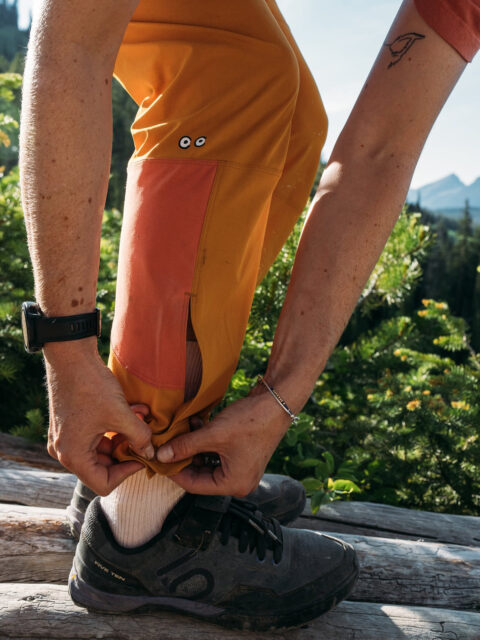
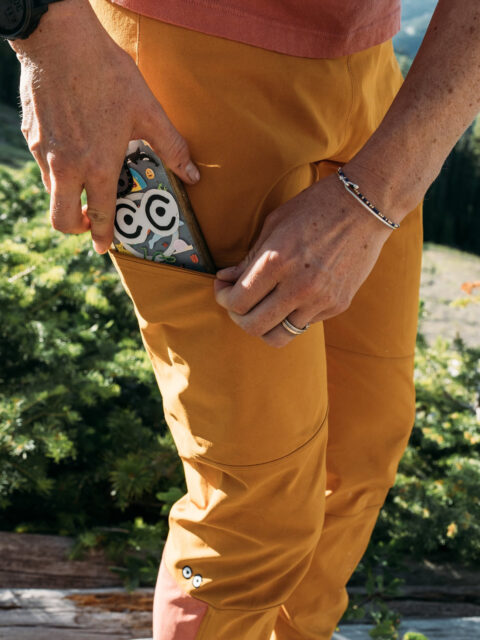
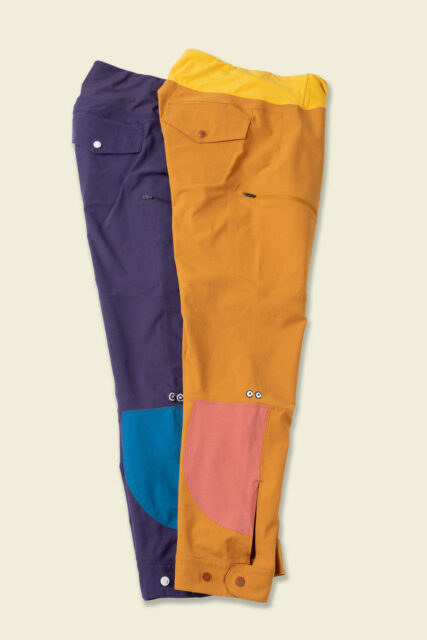
The Sun Dog pant is a lightweight, warm-weather model, but they worked well for me in cooler morning temps. The soft and stretchy polyester fabric and jersey waistband (no buttons or zippers) made these pants extremely comfortable and I found they run true to size. I have a size 6 and while I haven’t yet tested them with chamois, the fit is perfect for my 5’8”, 130 lb frame (173 cm, 57 kg).
And lastly (for now), the Sun Dog’s deep side pockets are big enough to hold my phone, which I appreciate when commuting or wearing the pants casually. I’m excited to log more miles and hours in these pants as well as in the Curious Creatures Rambke Scramble Short and Senderella Tank — both of which have also impressed me so far.
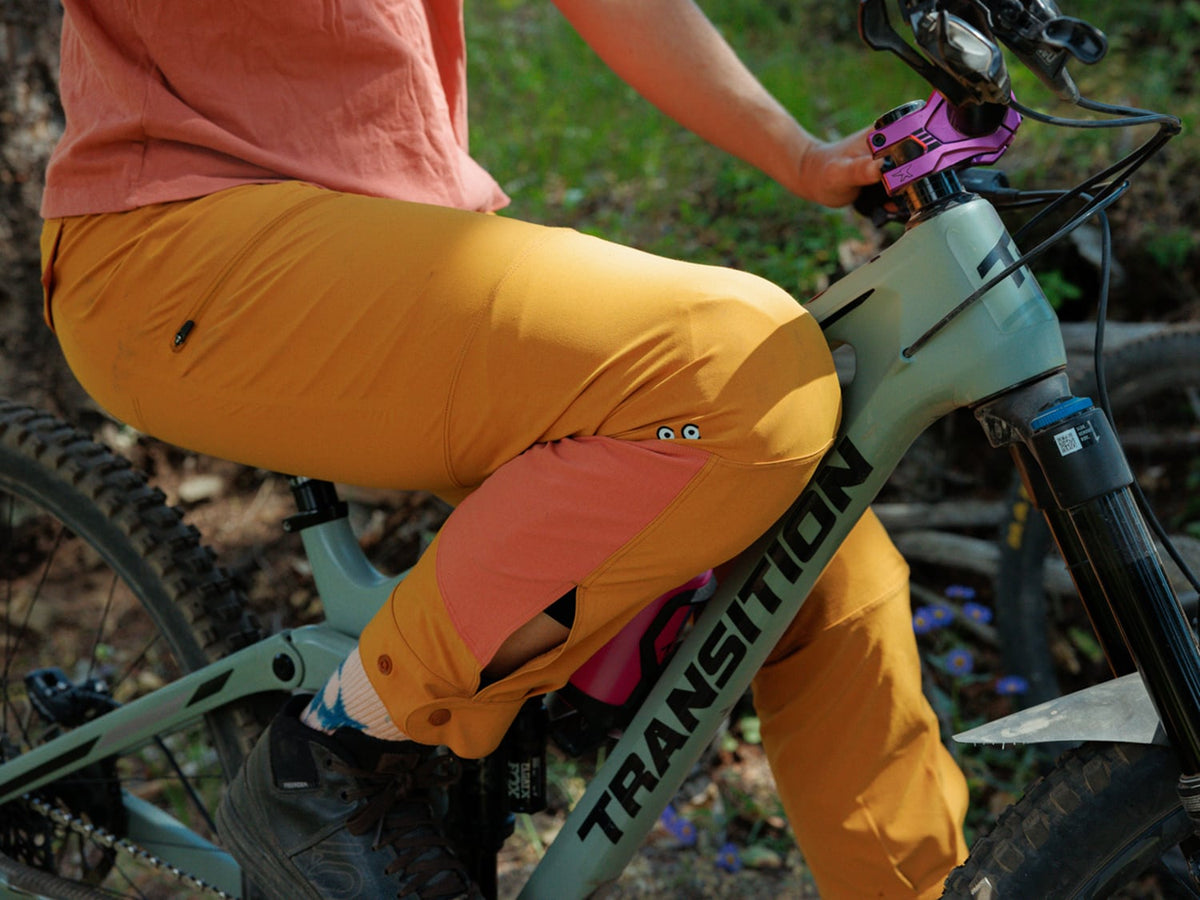

Velocio Trail Access Hardshell
MSRP: $389
David Golay: I’ve been testing a bunch of Velocio’s new mountain bike apparel line (stay tuned for many more reviews) and while I’ve generally been impressed with the line as a whole, the Trail Access Hardshell is a real standout. This time of year I’m doing a lot of rides that include some combination of (1) a comfortable temperature at lower elevations but pretty cold up high, (2) threatening to rain, (3) actively raining, or (4) not actually raining but the ground and passing vegetation are wet and pass a lot of that moisture on to me. While I’ve tried a lot of waterproof mountain bike jackets over the years, the Trail Access Hardshell is my current favorite.
The fabric is the biggest reason why — the Trail Access Hardshell is the most breathable waterproof jacket that I’ve tried to date, which has made it really easy for me to grab on days when there’s a moderate chance of showers in the forecast, but I also just want a light layer to keep me a bit warmer on the descents.
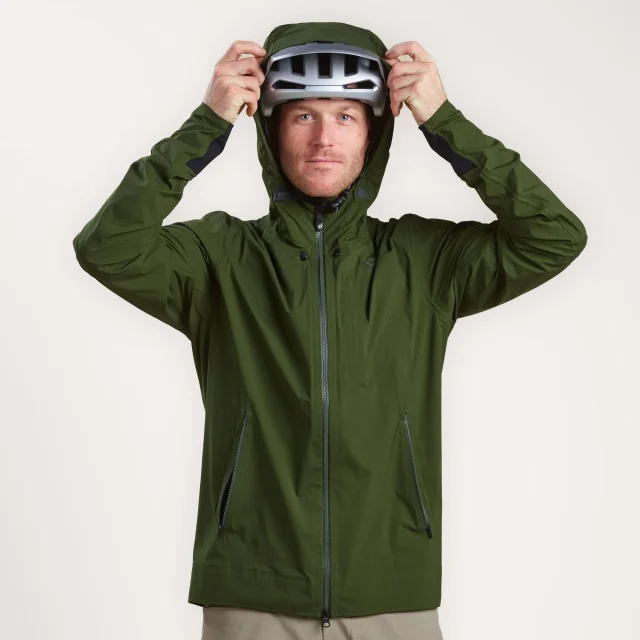
The air-permeable Pertex Shield Air fabric is remarkably breathable — more so than even a couple of other air-permeable waterproof jackets I’ve tried, including the Fox Flexair Neoshell, and the Outdoor Research Helium AscentShell, which uses the same Pertex membrane but a different, much less supple face fabric. Still, the Trail Access Hardshell has kept me dry over several hours of moderate rainfall and a ton of tire spray, while being a lot more comfortable to pedal in than the vast majority of waterproof jackets out there. It’s also very light (281 g for the men’s Medium that I’ve been wearing) and packs quite small — which is very welcome for on-bike use, where I’m frequently trying to stuff it into a hip pack.
Velocio has done a nice job with the details, too. The hood is sized to fit over a helmet but features two separate elastic adjusters — at the collar to cinch the front, and at the back of the neck to pull the hood back — which make it very useable when being worn without one. The cuffs are also a highlight, using a stretch panel on the underside of the wrist in lieu of an adjustable closure. They’re secure, comfortable, and allow for the sleeves of the jacket to taper to a moderately slim fit while still being easy to take on and off — in a word, dialed. On the storage front, the Trail Access Hardshell features two medium-sized zippered hand pockets (with perforated liners, so they serve as vents when left open) and a small zippered lumbar pocket on the right side, plus a zippered interior chest pocket (sized for a cell phone) on the left side.
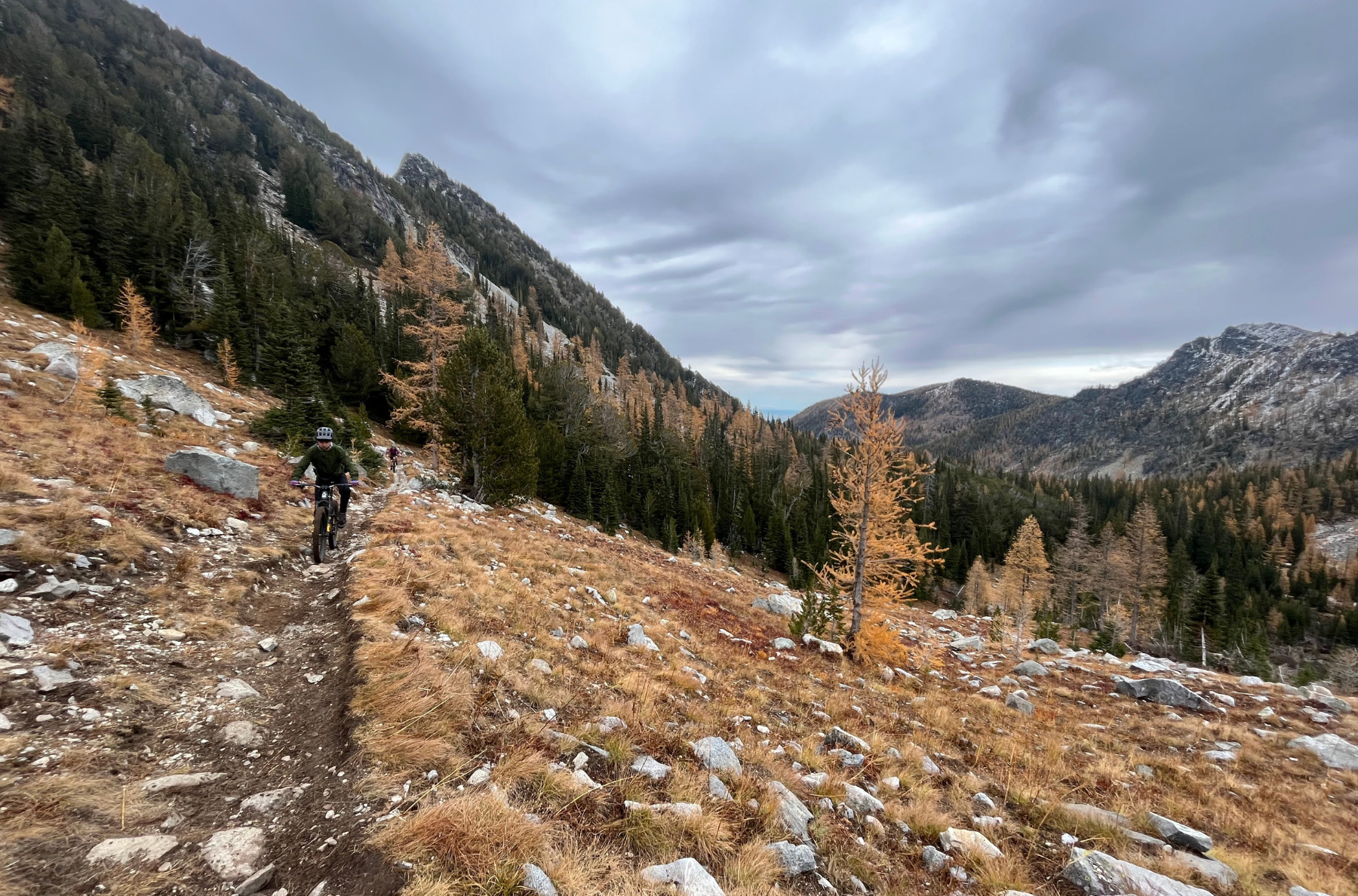
If I have any complaint with the Trail Access Hardshell, it’s that I personally wouldn’t mind if the jacket was just a little bit slimmer fitting through the torso (I’m wearing a Medium, at 6’, 170 lb / 183 cm, 77.1 kg) but it’s certainly not unduly baggy or anything like that, and Velocio does describe it as having a “relaxed cut.” It’s not enough to make me tempted to size down to a Small, but if you’re looking for a super trim-fitting jacket, this isn’t it. I’m pretty much never biking in temperatures cold enough for me to want to wear anything more than a light baselayer under a light jacket, so room for layering isn’t much of a concern in my world, and the fit of the Medium I’m wearing is still overall quite good — just maybe not 100% optimized for me, personally. Your mileage may vary.
The Trail Access Hardshell admittedly isn’t cheap, but between its outstanding breathability, great packability, and well-thought-out design and features, it’s become my go-to jacket for on-bike use this fall, and one that I’m excited to have in the closet for the wet portion of my riding season that’s just now kicking off.
Blackhouse Botanicals CBD / CBG Releaf Stick
MSRP: $39.99 (on sale for $33.99 as of publishing)
Kara Williard: Of all the abuse I have put my body through this summer, nothing has quite done as much damage as long days at my desk and sitting at the computer (I have our 23/24 Winter Buyer’s Guide to thank for this). The result has been some of the worst and most uncomfortable neck pain I have ever experienced. Despite stretching, acupuncture, using a massage gun, and working on my overall desk setup and posture, there is nothing that has matched the relief of Blackhouse Botanicals’ Releaf Stick.
The Releaf stick is a roll-on ointment that brings quick and localized relief as well as a really strong cooling effect. Using CBD and CBG, as well as a mix of menthol, essential oils, and capsaicin, the effects are immediate and potent. I’ve been really impressed by the sustained comfort offered by this blend and am not actually sure I would have gotten through this Buyer’s Guide cycle without it.
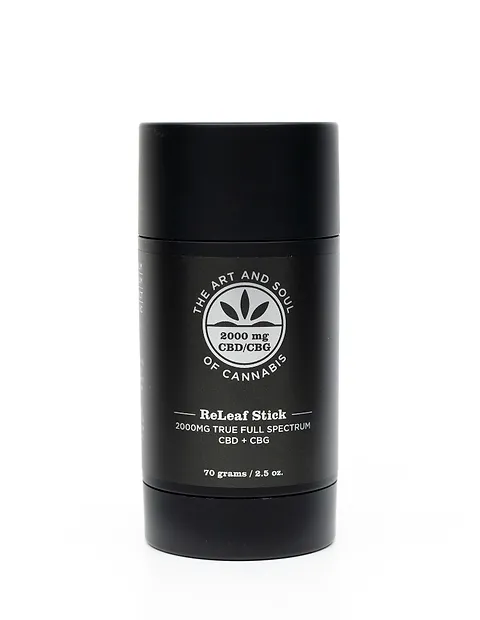
It works great on most ailments, though the menthol and capsaicin mean it is strong, and I would recommend using caution when touching your face or eyes if it’s on your hands. It smells great, and with the roll-on design, it is super easy to apply (you don’t have to rub it in with your hands).

ergo keyboard and standing desk! as a fellow all day staring a computer person
2X Standing Desk